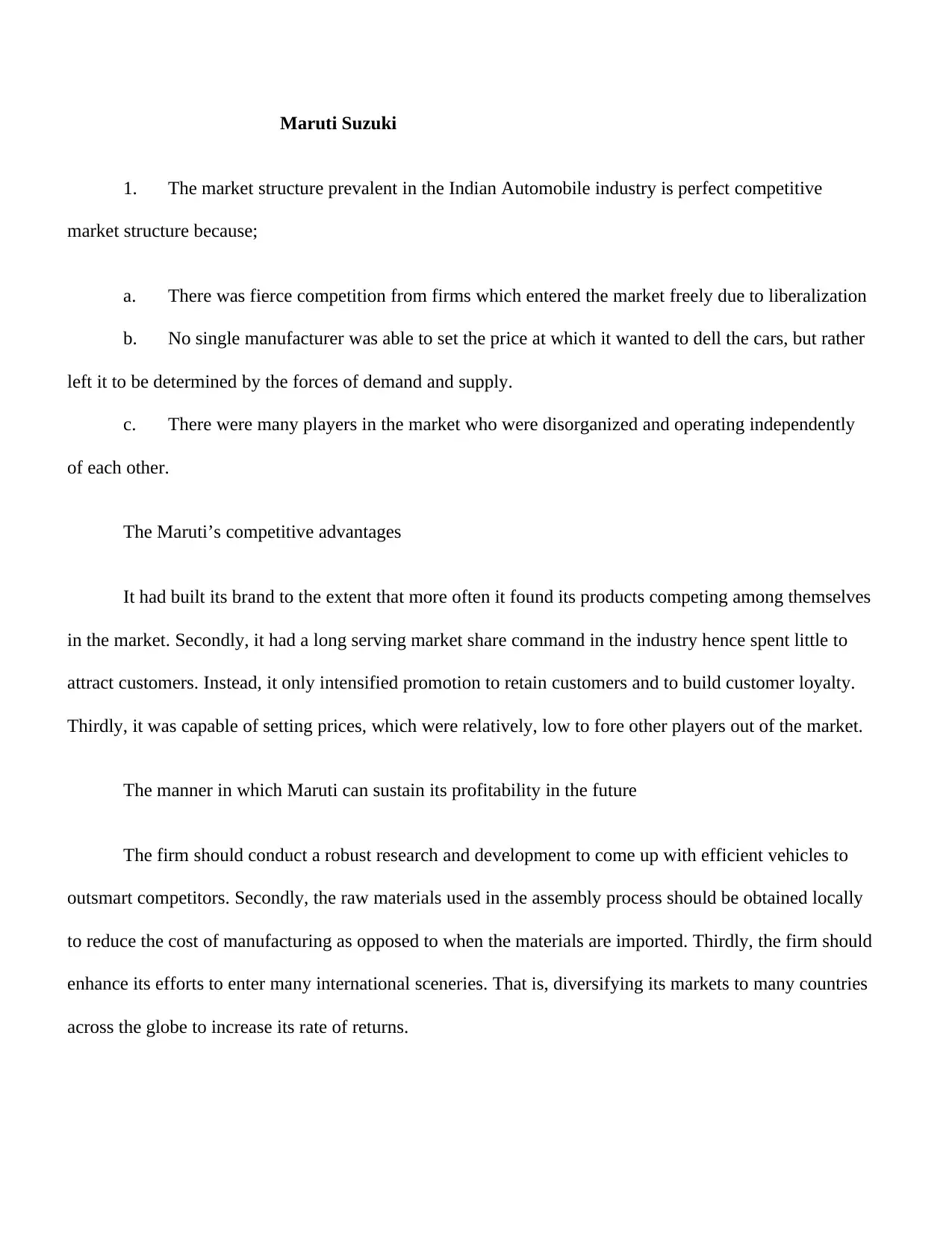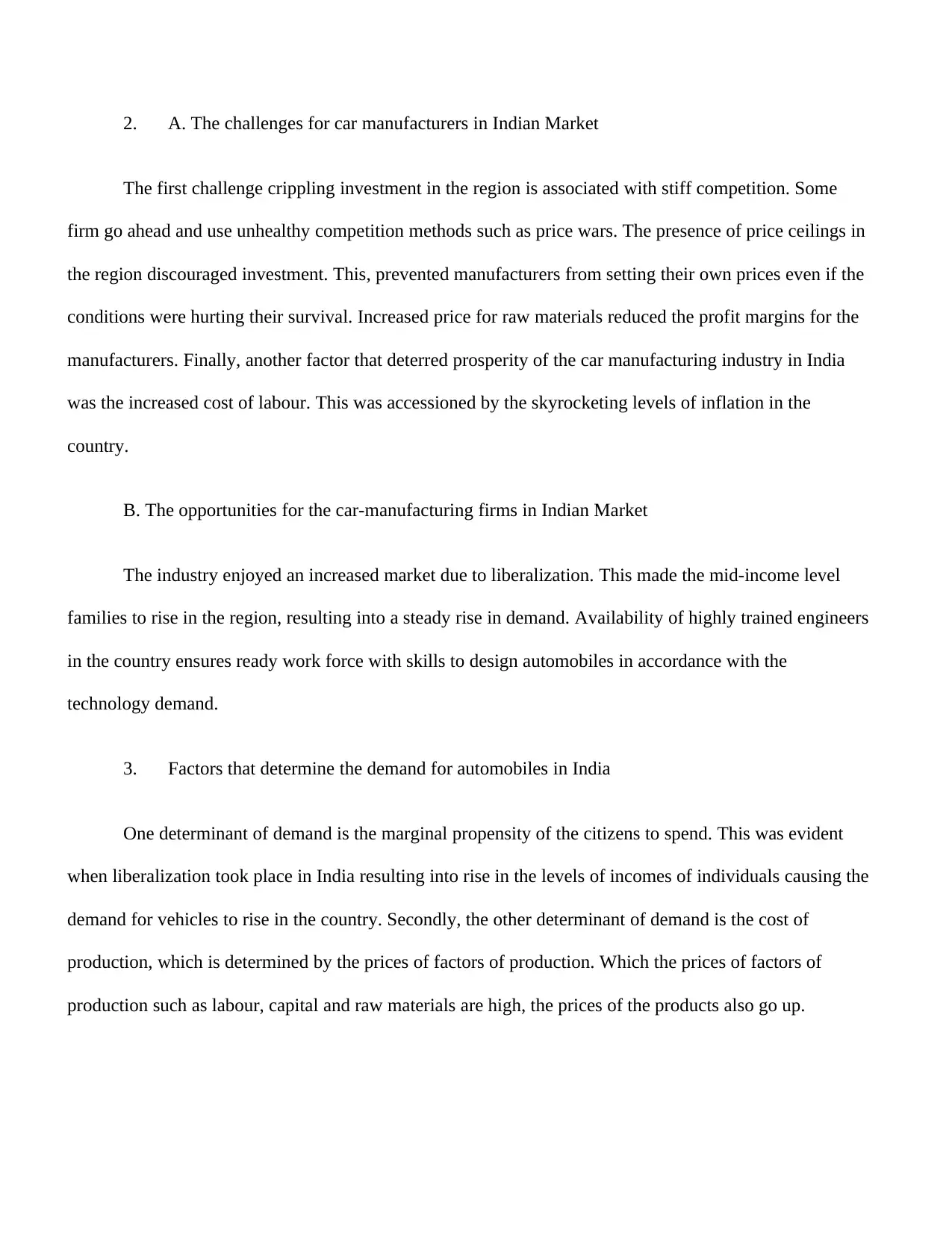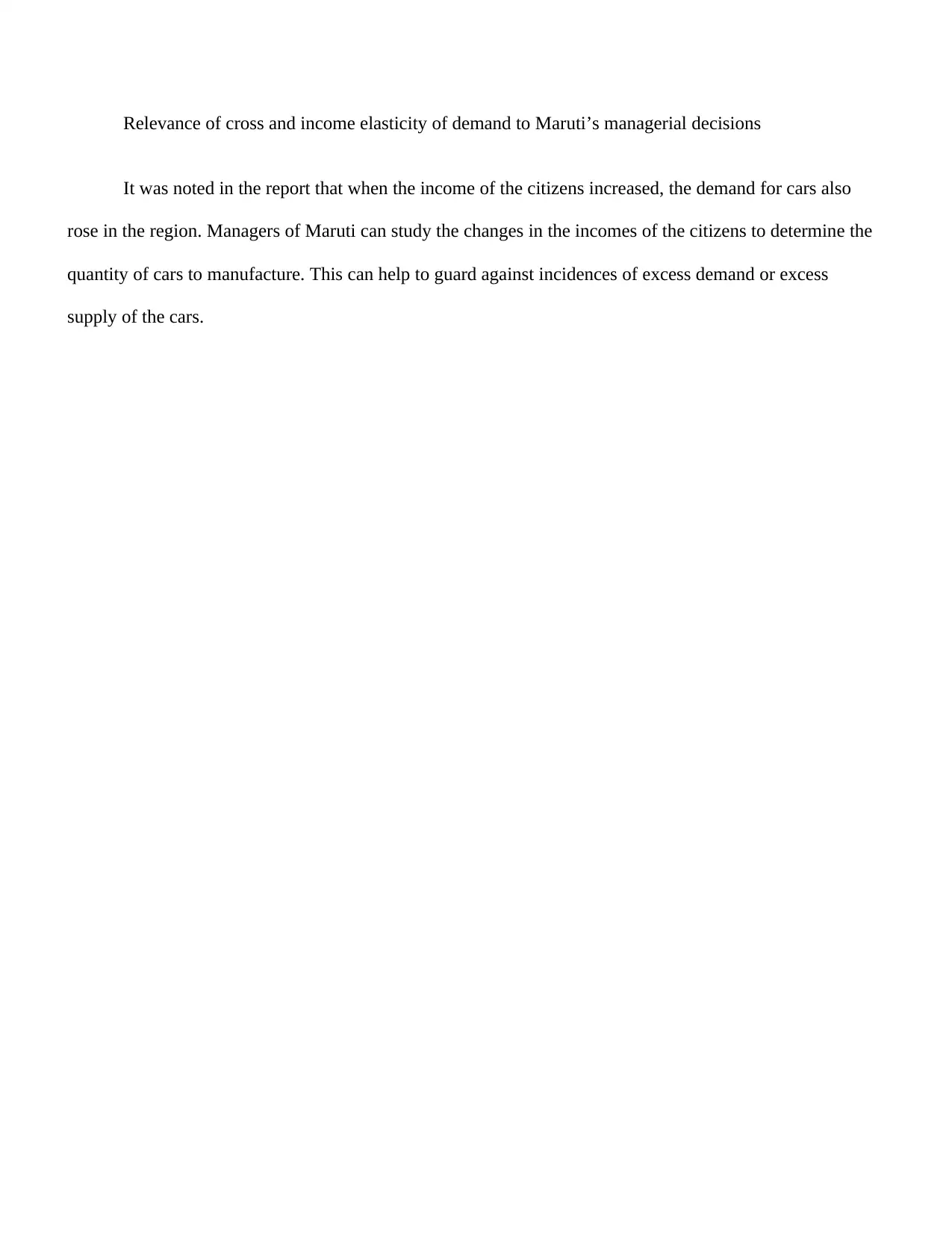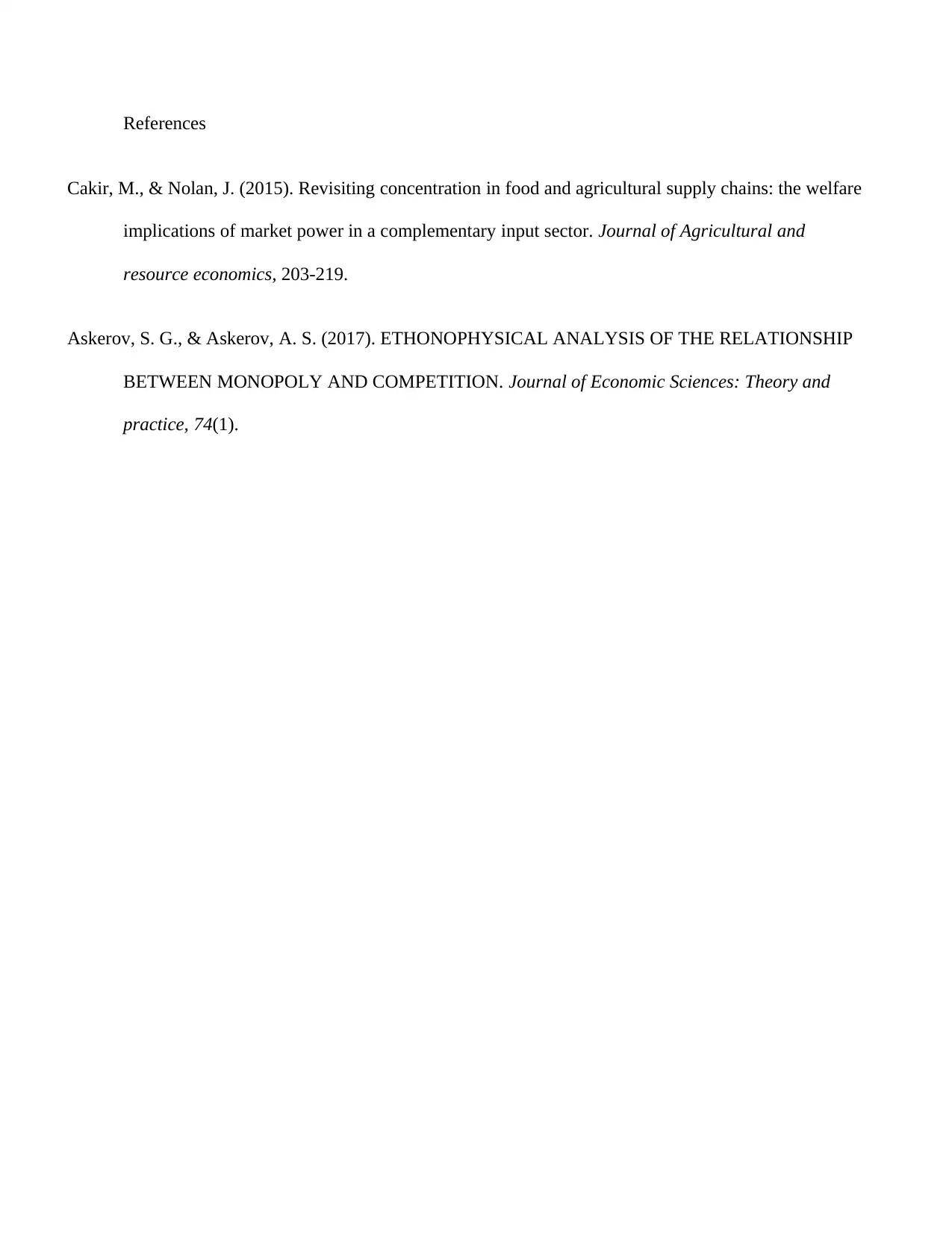Business Economics Assignment: Maruti Suzuki's Market Analysis
VerifiedAdded on 2022/11/19
|4
|704
|248
Homework Assignment
AI Summary
This assignment analyzes Maruti Suzuki's market position in the Indian automobile industry, focusing on its competitive landscape, market structure, and strategic challenges. It explores the firm's competitive advantages, including its brand recognition and pricing strategies, while also examining the challenges posed by intense competition, fluctuating input costs, and labor expenses. The analysis delves into the opportunities available to Maruti Suzuki, such as the rising middle-income population and the availability of skilled engineers. Furthermore, the assignment discusses factors determining automobile demand in India and the relevance of cross and income elasticity of demand to Maruti's managerial decisions. The analysis provides recommendations for sustaining profitability and navigating the dynamic market environment.
1 out of 4











![[object Object]](/_next/static/media/star-bottom.7253800d.svg)